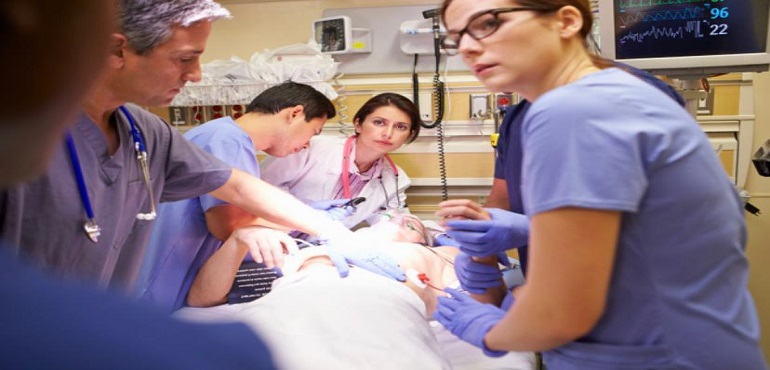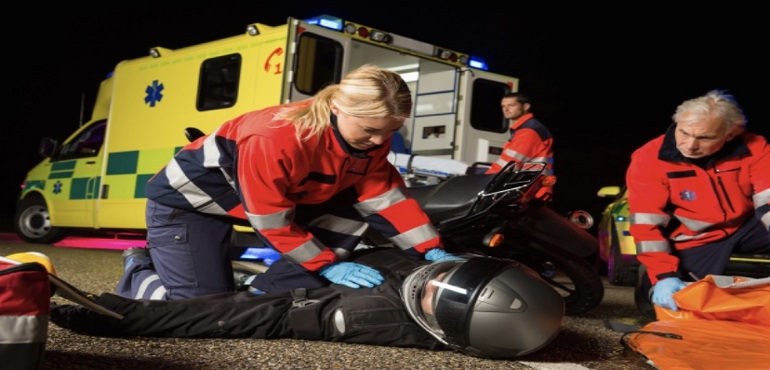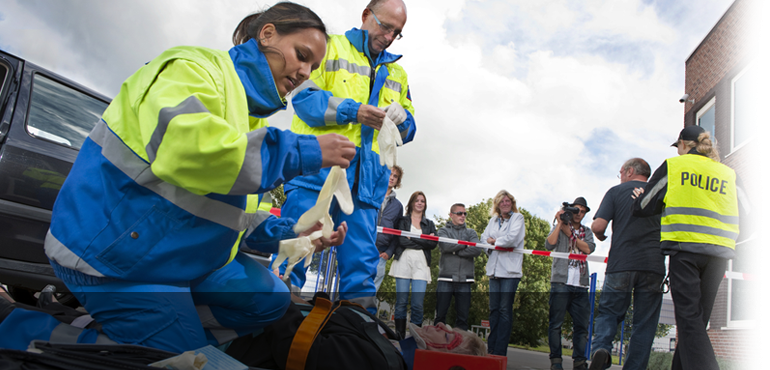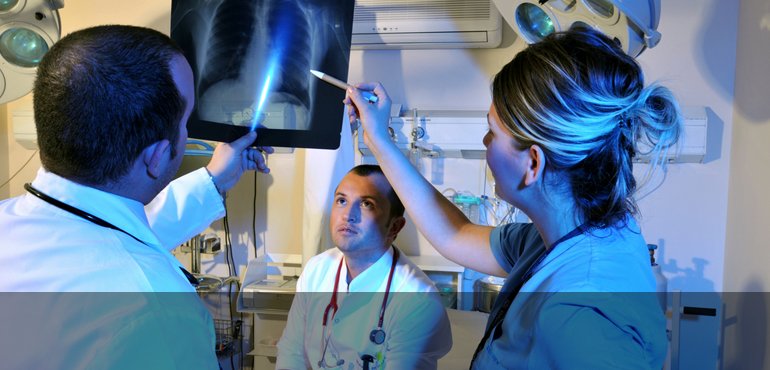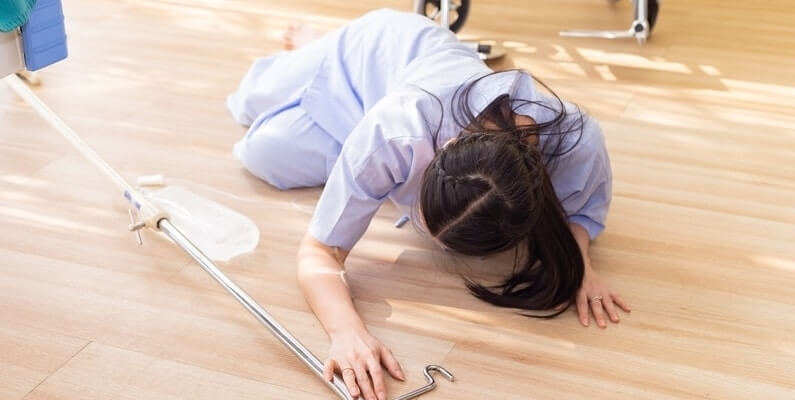| Toll Free : 1844 495 7333(injury hotline- new cases only) | |
| Text a Personal Injury Lawyer 24/7 and get instant help.TM (416 931 5015) | |
| Head Office : 905 495 7333 |
What can you do for preventable injuries and hospital falls?
March 24, 2021Every one of us might have older relatives or family members in the hospital for routine procedures or treatment. Nonetheless, I find that the statistics of a senior citizen hurting themselves from a hospital fall are way higher.
It might come as a bigger surprise to you that, according to a recent survey, fall-related injuries are the major factor for over 90% of senior citizen injuries. Seniors hurting themselves by falling in hospitals or healthcare establishments is not new, but this matter’s seriousness is more than people realize.
A simple fall, however hurtful it may be, might not seem like that serious of an issue. But in the case of seniors, a simple fall can have catastrophic effects on their health. This fact is more expressed in the case of hospital falls. If a senior citizen undergoes some treatment or surgery in the hospital, their body remains in a vulnerable state for a considerable period. So, if they experience an injury from a fall in that period, the effect may be spread across multiple organ systems in their body. Therefore, a senior getting hurt from a hospital fall is not a light matter and can develop into a life-threatening situation.
Proper fall risk assessment
I think that a hospital or any healthcare institution is where everyone goes to cure and heal their bodies, so it should be the last place where they should get hurt. Senior citizens who are more affected by medical conditions should be admitted only after a proper fall risk assessment. Senior citizens suffering from some ailment are more prone to falling and hurting themselves than others. So, it is necessary to properly assess those factors and plan the limit of restraint accordingly.
In most cases, I have found that senior citizens are not in proper control of their bodies, especially after a serious surgery or treatment. The medications’ impact often leads them to convalesce, ultimately leading them to lose their balance and fall. As mentioned already, these simple falls can seriously hurt them, not to mention the fact that it can make their condition worse.
Every hospital follows a restraint policy because the excessive movement can cause complications for the patient, but there should also be an extent for freedom of movement, or else the patients will be very uncomfortable. The extent of restraint is exactly what is determined by the fall risk assessment. This is done for every patient in general but is very important in seniors’ case since they are at a higher risk of falling.
How critical is a proper fall risk assessment?
The procedure for fall risk assessment is different for different hospitals and institutions. However, the general procedure consists of mainly referring to the patient’s medical history, the different medications they are on, and the impact of the treatment on maintaining balance and assessing their surroundings. All the factors are considered objectively according to a scoring system. At the end of the assessment, the scoring system determines whether the patient is at a low, moderate, or high risk of receiving a fall injury.
In my opinion, there are several measures that a hospital needs to take proper care of in case people have a high fall risk. This becomes exponentially more important in the case of senior citizens. If the patient is at a high risk of falling, several fall prevention strategies need to be followed by the hospital. A fall prevention strategy document should be prepared with proper records of all the safety measures put into place to prevent injuries for the patient. This is very important as it can help you determine if there was any negligence on the part of the hospital. This document should be present in the patient’s chart.
Some of the common fall prevention strategies include lowering the hospital bed level, a call bell placed within the patient’s reach, the bedrails erected, and more. There should be a mandatory ‘stop and check’ sign on the patient’s door. Also, the bathroom path should be made readily available so that the patient does not lose their balance.
When it comes to seniors, I think hospitals should resort to more tailor-made fall prevention methods to reduce injuries to a minimum. Some common measures include scheduled toilet trips, activating alarms, and regular interaction with the patients for their needs and wants. The bottom line is that the hospital must ensure that all the steps are being followed to prevent the patient from getting injured by falling. In my experience, it is more often than not that the hospitals do not take proper care to put these measures in place, not only for seniors but also for general patients.
What to do in case of a hospital fall?
If someone hurts themselves by a hospital fall, there are certain procedures the hospital management should follow strictly for salvaging the situation. The first and most important thing to do is to form a ‘fall huddle.’ This is vital for discussing the damages caused by the fall and what steps should be followed next for handling the situation.
The next thing to do would be to determine if all the necessary measures for preventing the fall were put in place. This is important for determining the negligence of the hospital. Remember, if you want to pursue a legal course, this is the most crucial step. Finally, you need to determine if there was any witness to the fall since they are the most effective source of information regarding how damaging the fall was.
My firm can help you pursue a legal course of action if you or your family members are victims of a hospital fall. These are preventable injuries, and most of the time, the negligence on the part of the hospital is involved. I find that most people do not take this matter as seriously as they should. But in the case of patients, these simple falls can prove to be fatal. It is a ‘too little too late’ scenario for them. The patient might be too late to do something about these preventable injuries, but you still can. Contact my firm or me, and we can provide you a team of experts who will help you frame your case in the most efficient way and pursue a legal course of action. Several personal injury lawsuits can be filed depending upon the situation. Just contact us, and we can help you get started on your path to a peaceful resolution.
What can you do for preventable injuries and hospital falls?
March 24, 2021Every one of us might have older relatives or family members in the hospital for routine procedures or treatment. Nonetheless, I find that the statistics of a senior citizen hurting themselves from a hospital fall are way higher.
It might come as a bigger surprise to you that, according to a recent survey, fall-related injuries are the major factor for over 90% of senior citizen injuries. Seniors hurting themselves by falling in hospitals or healthcare establishments is not new, but this matter’s seriousness is more than people realize.
A simple fall, however hurtful it may be, might not seem like that serious of an issue. But in the case of seniors, a simple fall can have catastrophic effects on their health. This fact is more expressed in the case of hospital falls. If a senior citizen undergoes some treatment or surgery in the hospital, their body remains in a vulnerable state for a considerable period. So, if they experience an injury from a fall in that period, the effect may be spread across multiple organ systems in their body. Therefore, a senior getting hurt from a hospital fall is not a light matter and can develop into a life-threatening situation.
Proper fall risk assessment
I think that a hospital or any healthcare institution is where everyone goes to cure and heal their bodies, so it should be the last place where they should get hurt. Senior citizens who are more affected by medical conditions should be admitted only after a proper fall risk assessment. Senior citizens suffering from some ailment are more prone to falling and hurting themselves than others. So, it is necessary to properly assess those factors and plan the limit of restraint accordingly.
In most cases, I have found that senior citizens are not in proper control of their bodies, especially after a serious surgery or treatment. The medications’ impact often leads them to convalesce, ultimately leading them to lose their balance and fall. As mentioned already, these simple falls can seriously hurt them, not to mention the fact that it can make their condition worse.
Every hospital follows a restraint policy because the excessive movement can cause complications for the patient, but there should also be an extent for freedom of movement, or else the patients will be very uncomfortable. The extent of restraint is exactly what is determined by the fall risk assessment. This is done for every patient in general but is very important in seniors’ case since they are at a higher risk of falling.
How critical is a proper fall risk assessment?
The procedure for fall risk assessment is different for different hospitals and institutions. However, the general procedure consists of mainly referring to the patient’s medical history, the different medications they are on, and the impact of the treatment on maintaining balance and assessing their surroundings. All the factors are considered objectively according to a scoring system. At the end of the assessment, the scoring system determines whether the patient is at a low, moderate, or high risk of receiving a fall injury.
In my opinion, there are several measures that a hospital needs to take proper care of in case people have a high fall risk. This becomes exponentially more important in the case of senior citizens. If the patient is at a high risk of falling, several fall prevention strategies need to be followed by the hospital. A fall prevention strategy document should be prepared with proper records of all the safety measures put into place to prevent injuries for the patient. This is very important as it can help you determine if there was any negligence on the part of the hospital. This document should be present in the patient’s chart.
Some of the common fall prevention strategies include lowering the hospital bed level, a call bell placed within the patient’s reach, the bedrails erected, and more. There should be a mandatory ‘stop and check’ sign on the patient’s door. Also, the bathroom path should be made readily available so that the patient does not lose their balance.
When it comes to seniors, I think hospitals should resort to more tailor-made fall prevention methods to reduce injuries to a minimum. Some common measures include scheduled toilet trips, activating alarms, and regular interaction with the patients for their needs and wants. The bottom line is that the hospital must ensure that all the steps are being followed to prevent the patient from getting injured by falling. In my experience, it is more often than not that the hospitals do not take proper care to put these measures in place, not only for seniors but also for general patients.
What to do in case of a hospital fall?
If someone hurts themselves by a hospital fall, there are certain procedures the hospital management should follow strictly for salvaging the situation. The first and most important thing to do is to form a ‘fall huddle.’ This is vital for discussing the damages caused by the fall and what steps should be followed next for handling the situation.
The next thing to do would be to determine if all the necessary measures for preventing the fall were put in place. This is important for determining the negligence of the hospital. Remember, if you want to pursue a legal course, this is the most crucial step. Finally, you need to determine if there was any witness to the fall since they are the most effective source of information regarding how damaging the fall was.
My firm can help you pursue a legal course of action if you or your family members are victims of a hospital fall. These are preventable injuries, and most of the time, the negligence on the part of the hospital is involved. I find that most people do not take this matter as seriously as they should. But in the case of patients, these simple falls can prove to be fatal. It is a ‘too little too late’ scenario for them. The patient might be too late to do something about these preventable injuries, but you still can. Contact my firm or me, and we can provide you a team of experts who will help you frame your case in the most efficient way and pursue a legal course of action. Several personal injury lawsuits can be filed depending upon the situation. Just contact us, and we can help you get started on your path to a peaceful resolution.



